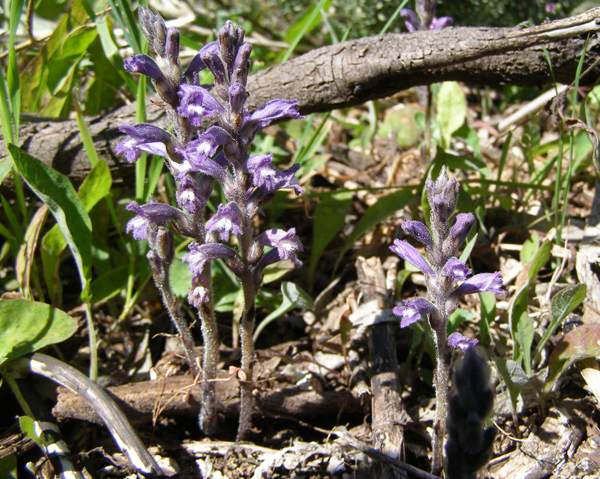Orobanche ramosa - Hemp Broomrape or Branched Broomrape
Phylum: Magnoliophyta - Class: Equisetopsida - Order: Lamiales - Family: Orobanchaceae

Above: Orobanche ramosa - found in many countries of the world
This beautifully coloured broomrape has a vast area of distribution from southern Britain and Ireland, across western and central Europe, parts of Asia, North and South Africa, and North America. Although we have not seen it in the UK we are familiar with it from the Algarve region of southern Portugal where it parasitises the plants of the Lamiaceae (Mint) family.
Orobanche ramosa has a branched infloresence which carries the attractive, amethyst-coloured flowers. We frequently find large colonies of this broomrape in the Algarve from the end of March and well into May. It grows in farmland, on roadside verges and also in the sandy coastal strip.

Orobanche ramosa in an area of scrub in the Algarve region of Portugal
In the United States of America Orobanche ramosa is classed as a noxious weed, and it does particular damage to potato, tomato and tobacco crops. Its eradication requires several applications of herbicides.
Please Help Us: If you have found this information interesting and useful, please consider helping to keep First Nature online by making a small donation towards the web hosting and internet costs.
Any donations over and above the essential running costs will help support the conservation work of Plantlife, the Rivers Trust and charitable botanic gardens - as do author royalties and publisher proceeds from books by Pat and Sue.

